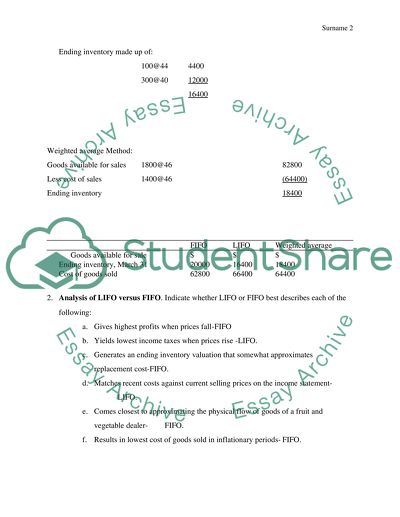Inventory Assignment Example | Topics and Well Written Essays - 250 words. Retrieved from https://studentshare.org/finance-accounting/1610618-inventory
Inventory Assignment Example | Topics and Well Written Essays - 250 Words. https://studentshare.org/finance-accounting/1610618-inventory.


